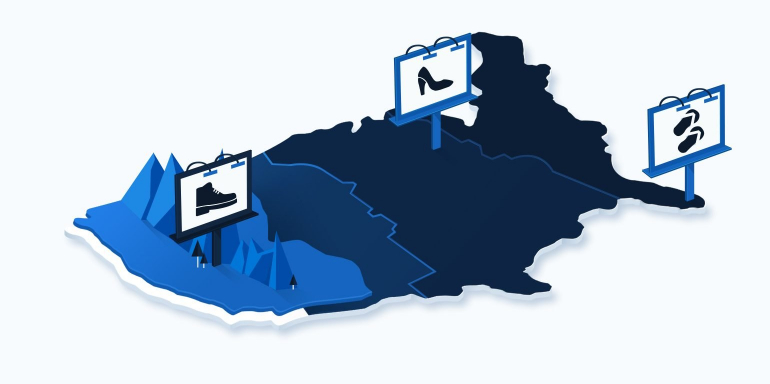A wise voice-over artist once said, “Digital advertising works best when it is personalized.”
But what does that mean, exactly?
The phrase, personalized advertising, is pretty straightforward. Advertisers that address an individual directly are more likely to get that person to act. How likely? HubSpot ran a study awhile back to find out. They tested 93,000+ calls-to-action over a 12-month period. After hundreds of millions of views, they found that calls-to-action targeted to specific users had a 42% higher view-to-submission rate over those that were the same for all visitors.
Not too shabby.
The numbers determine your destiny
Without data, there can be no personalized advertising. Data informs the messaging, the strategy, the design, etc. These insights help you define the basics, like wants/needs, geolocation, and demographic information to more specific insights such as a niche interest, buying intent, and even behavioral patterns.
Data collection as a way of understanding who your audience is and how you can message them directly may seem like the most obvious step in setting up a personalized advertising campaign. Surprisingly, it is still beyond the grasp of many brands. Gartner research released in 2014 found that less than 10% of tier-1 retailers believe they are highly effective at personalization with nearly one-third report having limited or no capability to support personalization efforts.
The analysts determined the sources of the problem to be:
- Failure to standardize customer data
- No linkages between CRM and merchandising systems
- Uncoordinated execution of personalization
The third bullet here is telling: Uncoordinated execution of personalization.
The foundation of successful advertising personalization doesn’t start with understanding your data, but through an understanding of how personalization is classified.
Enter the recently created Advertising Classification Personalization System, crafted by Instapage CEO Tyson Quick. This system is just the thing those brands struggling to achieve greater personalization in their advertising campaigns need. It helps marketers better understand the practice of advertising personalization and how to market with greater precision.
The classification system consists of five levels. For a quick overview of the levels check out this infographic.
For the rest of this article, we’re going to take a quick look at Level 1 — Regional Personalization.
Location, location, location: Level 1 — Regional Personalization
Level 1 advertising personalization speaks to a region’s needs, and more or less by default, your needs, too. If you live in the mountains, businesses and marketers are going to create ads for coats, gloves, hats, skis, boots, etc. Coastal residents are less likely to see promotions for these types of products.
Level 1 advertising works by placing ads of any media within a specific geographic location to influence purchase decisions in one locality. A marketer’s knowledge of a place plays a big part in deciding the type of targeting that will occur.
Regional personalization differs significantly from the thoroughly modern location-based advertising that relies on a consumer’s smartphone to place and message them directly in the form of an SMS alert or text. Level 1 Regional Advertising Personalization is analog when compared to location-based advertising which is truly digital.
There are numerous channels, methods, strategies, and technologies available to markets devising localized campaigns, and you can learn about them all here, in this in-depth analysis Level 1 Advertising Personalization — Everything you need to know.
The article discusses how the Advertising Classification Personalization System can help marketers bridge the trust gap, Level 0 personalization, and ways it can be best utilized digital marketers.
Be on the lookout for additional deeper dives into the Advertising Classification System. In coming articles, we will move up through levels: 2 — Demographic; 3 — Niche Interest; 4 — Hyper-intent; 5 — Biogenetic.
This system is designed to provide marketers a way to better focus their attention, time, and money, on campaigns that are relevant to specific audiences. Armed with this knowledge, brands and their marketers can offer customers experiences that align with their specific needs, reduce their cost of customer acquisition, and be less obtrusive in the lives of their loyal customers.
